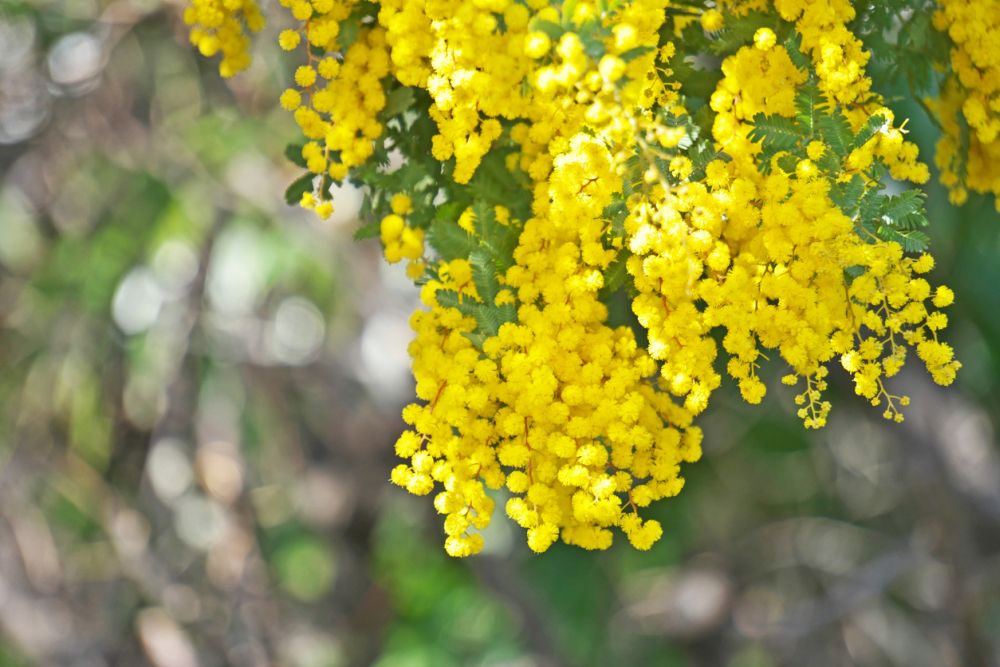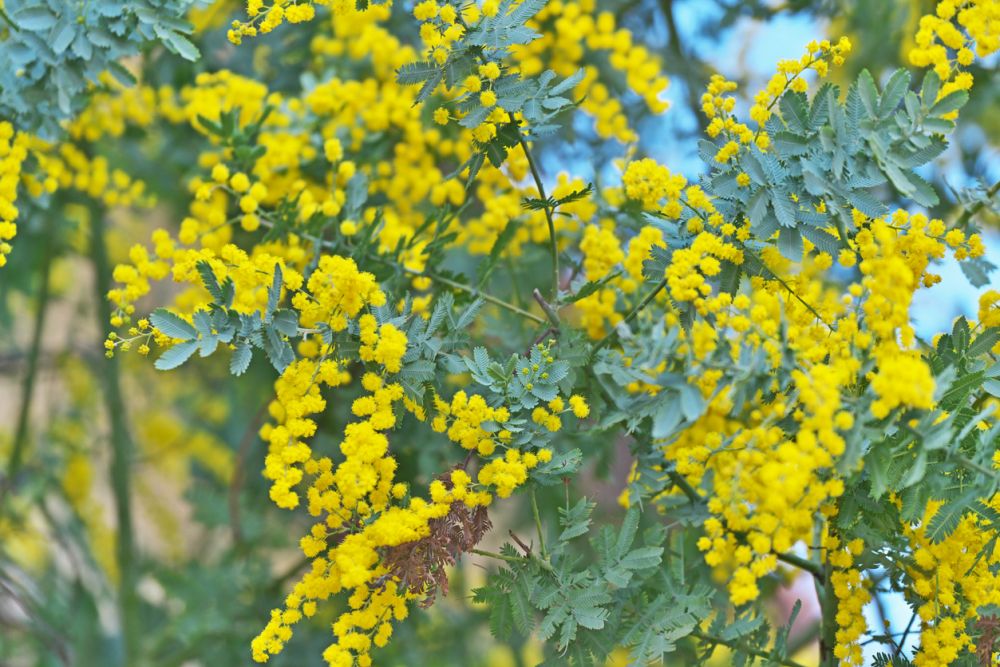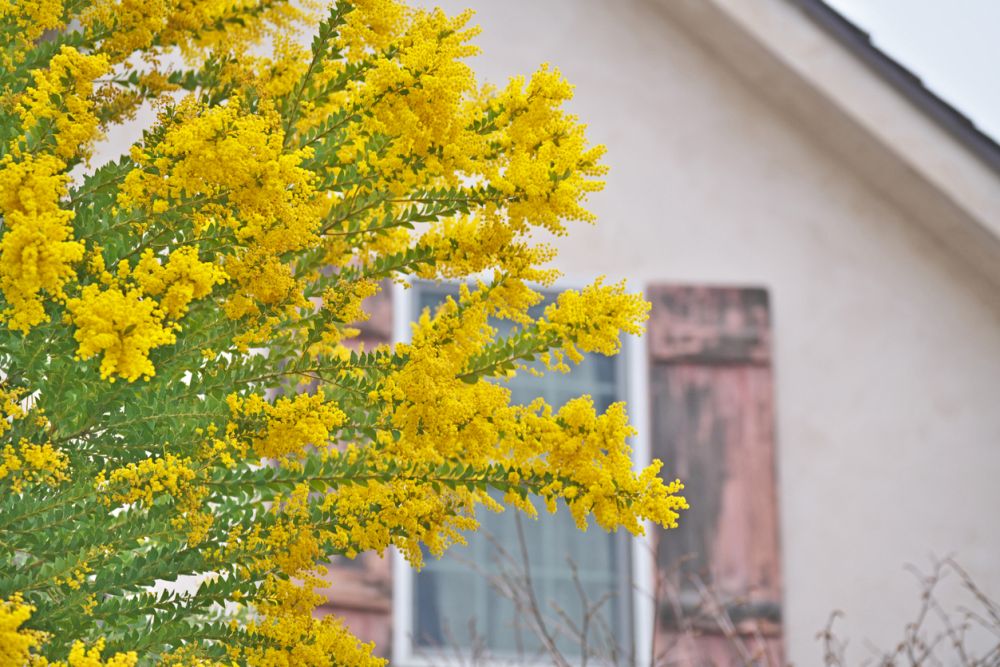Bailey Acacia Tree – How To Grow And Care For A Bailey Acacia Tree
Compact and graceful, the bailey acacia tree brightens up any corner in your garden with its evergreen canopy and colorful flowers. Their elegance and vigorous shades are more prominent in Mediterranean landscapes and wall-sided gardens. Their small stature doesn’t take away from their charm either. Whether you look at them as shrubs or trees in their own rights, there’s no denying that the bailey acacia tree is the ideal backdrop for more flashy and showy flowering perennials.
The beauty of trees is that they are easy to grow, have a high tolerance to the conditions around them once they’re established, and they become a permanent fixture of the landscape. And the bailey acacia tree is no different. Read on to find out more about these great candidates for many settings or garden designs you’re currently considering.
All About the Bailey Acacia Tree
A native of New South Wales, Australia, the bailey acacia tree (Acacia baileyana) casts a formidable shadow for a tree of its size. That mainly has to do with its erect posture and round canopy, which provide shade all year round. The compact bailey acacia tree goes by many names, including Cootamundra wattle and golden mimosa tree, among others.
As a member of the Fabaceae family, the bailey acacia has a more modest canopy that hangs and spreads low to the ground. It averages 20 feet high at full maturity and spreads about 40 feet across. But since the tree stands straight, it looks a lot taller and more graceful compared to other large trees.
Best suited for USDA zones 10 and 11, the tree is also known for its longevity and can live for more than 50 years. Add to that its fast growth rate, and you know you’ve got yourself a winner. In the right conditions, the tree grows about 36 inches a year. Within a few years, you’ll have a well-established tree that spreads its cheer and shade on every corner in your garden or backyard.
The bark of the tree can be either gray or light brown. The young tree will have smooth bark, which tends to develop grooves and furrows as it ages. But it’s the yellow flowers that give this tree its outstanding ornamental values. The flowers have both male and female parts and grow in clusters along thin stems. That eliminates the need for pollinators since each flower self pollinates with the help of the wind.
The flowers are bright and fragrant. After pollination, they fade and make room for the small fruits to develop. The fruits are brown when ripe and average about 3 inches long.
Uses of the Bailey Acacia Tree
For a tree that was an indispensable part of the culture of the aboriginal Australians, the bailey acacia tree has many uses than your average tree. Not just the obvious benefits as a source of timber, but it has been an integral part of many industries as well. Here are the main uses of the bailey acacia tree.
- Wood Products: The wood of the acacia goes into many wood-related industries, including sawn timber and furniture. It has solid wood, which goes well into making veneers for furniture. The tree is also a good source of pulp, fuelwood, charcoal, tool handles, posts, musical instruments, and turnery.
- Bark Products: The bark of the tree is of no less value than its solid and multi-purpose wood. Tannin is extracted from the bark, which provides all of Australia’s supply of the precious material used for processing and curing leather. The bark also provides a good quality glue that goes into bonding wood structures. Recent research also pointed to an anticorrosive agent that could be extracted from the bark.
- Gum: The gum that the tree provides goes into many food industries. It serves both as a food additive and an emulsifier.
- Essential Oil: In Australia, the fragrant wattle oil is a highly sought-after essential oil that is used in spas. It also goes into manufacturing scented candles.
- Traditional Medicine: Aboriginal Australians have used the bark and resins of the acacia tree in their traditional medicines. These concoctions are reputed to cure everything from asthma to cancer. They also used the fruits of the tree for food.
How to Grow Bailey Acacia Tree
Trees known for their longevity are usually difficult to start from seeds. The seeds of the bailey acacia tree have a low germination rate and take a long time to sprout. Since they’re readily available in your local nursery, it makes more sense to just pop in and buy a small tree or a sapling that’s a few months old. Here’s how to plant that sapling in your garden in easy steps.
- Select a spot in your garden that gets the full sun or partial shade. Avoid dark or heavily shaded areas where a permanent structure or a large tree cut off the sunlight from the tree.
- Dig a hole in the soil that’s the same depth as the container the young tree came in and about three times the width. Make deep incisions in the sides of the hole using a hoe or pitchfork.
- Lay the tree on its side and gently remove the container. Take a deeper look into the soil and the roots without removing too much of the soil clump. Spread the roots as best you can.
- Lower the tree in the middle of the hole and make sure the roots are spread out and filling every inch of the hole.
- Turn the tree around so that the healthier side is facing outward and fill back the hole with soil. Pack the soil firmly using the hoe or your feet to push out any air pockets and keep the tree standing upright.
- Create a raised edge around the tree to conserve water and direct the moisture to the perimeter roots.
- Water the young tree till the water reaches the edge of the circle.
Bailey Acacia Tree Care
Planting the sapling or young bailey acacia tree cuts down the time of starting the tree by half. As long as you have the light, water, and fertilizing under control, you have nothing to worry about. Even pruning the fast-growing tree is not such a difficult or demanding task.
Soil
The bailey acacia tree favors loamy and well-drained soil. That is something that most of the plants you grow in your garden have in common. Even trees with robust root systems prefer loose soil over compact and heavy soil. So test the tilth and texture of the soil before you plant the young tree. If there’s more clay or silt in the soil than sand, this soil is on the heavy side. Add perlite or coarse sand to loosen it up and bring it to a level where it doesn’t clump in your hand. The pH levels should be around neutral or slightly acidic. Anything between 6.0 and 6.5 is fine with this tree.
Light
As we mentioned, light is of the utmost importance for the bailey acacia tree. In the original habitat in Australia, the tree gets unfettered exposure to sunlight. This should be the main factor when deciding where to plant the tree. Pick a spot that gets between 6 to 8 hours of light every day. And because the tree will be around for the next 50 years or so, make sure you plan for the future as well. Don’t plant large trees or build constructions that could keep the tree in permanent shade. This will impact the tree’s bright green foliage and showy flowers as well. Light deprivation also affects the growth rate of the tree.
Water
When you water the bailey acacia tree, try to water it deeply and allow time for the soil to dry between irrigations. Frequent watering, which results in perpetually moist soil, can have lasting damage on the roots and causes root rot. So allow the top 3 to 4 inches of the soil to dry out completely before you water the tree. The weather conditions and soil type will affect your watering schedules. In the summer months, the soil will dry out fast, so you might have to water the tree about once a week. As the temperature cools down, you will cut back on irrigating the tree to about once every two to three weeks.
Fertilizer
Before you apply any fertilizer to the bailey acacia tree, take a thorough test of the chemical structure of the soil first. That will help you determine which nutrients are lacking and provide them to the tree on a yearly basis. This usually has a better result than dumping fertilizer which could burn the roots of the tree or prevent the flowering. If, for example, you have a high concentration of nitrogen in the soil, then adding a 20-20-20 fertilizer to the soil could mean the tree will have an unusual foliage growth but fewer blooms. Apply the organic compost or fertilizer once a year in the early spring.
Pruning
One of the best features of the bailey acacia tree is its round canopy which rests on top of an erect trunk. And although that happens naturally, certain factors might put a monkey wrench in the system and cause aberrant growth patterns or even leaning trees. These conditions could be air pollution, lack of sufficient sunlight, poor air circulation, or bad soil condition. In that case, you’ll need to use your trusty pruning shears on the tree to fix the awry branches, remove dead or damaged branches and ensure the center of the tree gets as much sunlight and airflow as the outer canopy. The best time to prune the tree is after the pods have become ripe in the fall. Cut back about one-third of the tree to encourage new growth by next spring.
Pests and Diseases
Although the bailey acacia tree has a high tolerance for drought, hot temperature, and different soil types, it’s no match for tiny pests such as scale and spider mites. They both feed on the sap in the leaves and cause tiny holes in the foliage. If you notice the leaves turning yellow or falling, the tree could be infested with these pests. Use a garden hose to spray the branches with water and chase away the pests. Make sure the tree has enough air circulation to prevent spider mites from finding refuge among its leaves.
Fungi and bacteria cause leaf spot infections. This disease leaves tiny brown or black spots on the leaves. As it spreads, it could cause the tree to shed about half of its leaves or more. Insects and poor ventilation often cause this disease. You’ll need to remove the infected leaves. If whole branches are infected, remove them using a cordless pole saw. Hold off watering the soil to reduce the humidity in the air. Then rake up the fallen leaves and remove any debris around the tree that might invite pests to the tree.


